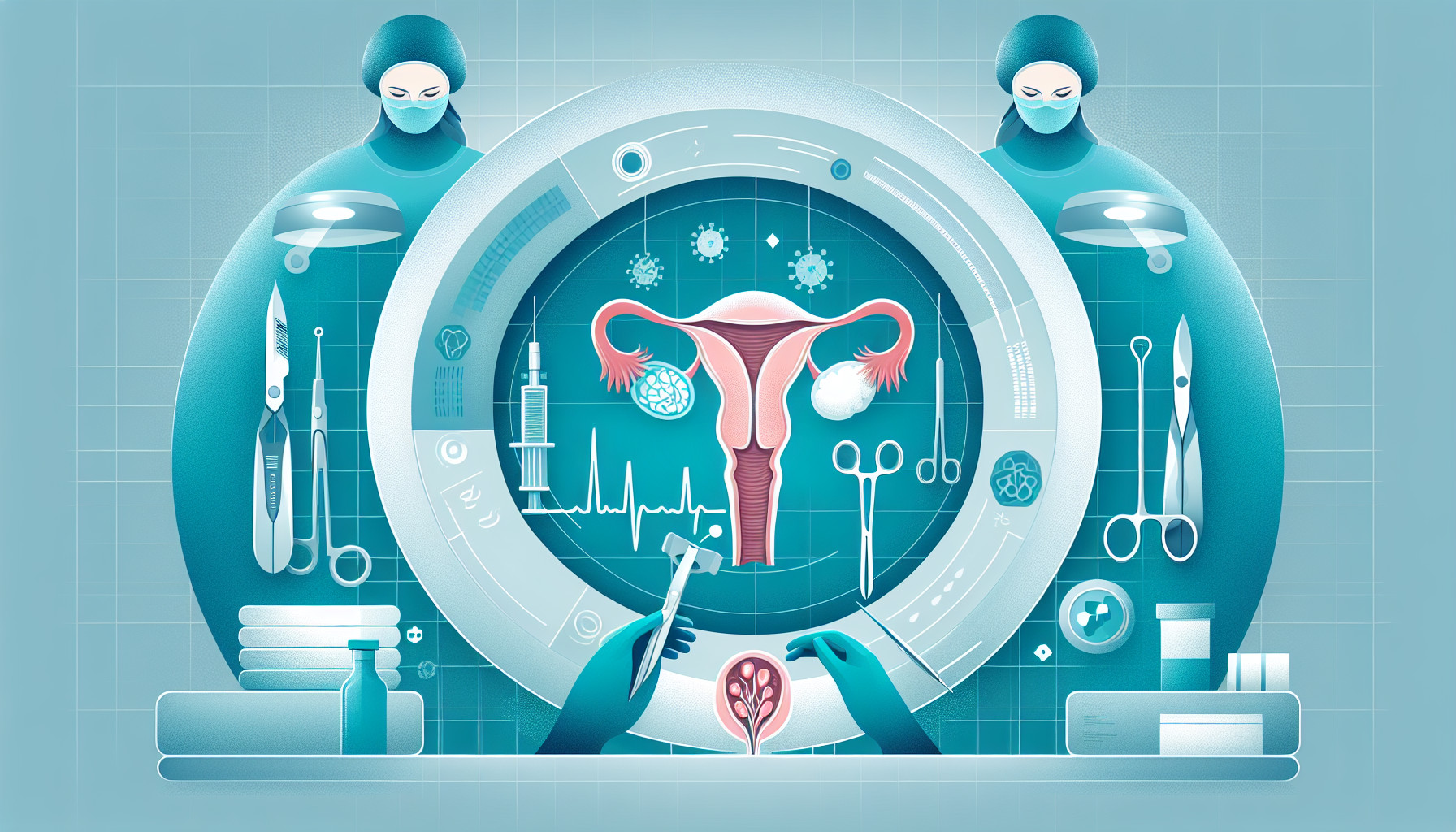Our Summary
This research paper discusses a very rare case of endometriosis that began in a mesonephric cyst. This type of endometriosis has only been reported in three cases involving animals, but this is the first reported case in a human. The 37-year-old patient was experiencing severe menstrual pain, pelvic and back pain, infertility, pain during sex, and discomfort in the groin. After a physical examination and imaging, the doctors suspected a cyst on her left ovary and a mesonephric cyst. During surgery, they found a bleeding cyst and endometriosis deeply affecting her left ureter and a ligament in her uterus, along with endometriosis in the mesonephric cyst. Studying this case and others in the scientific literature, they conclude that while this type of endometriosis is rare, it can indicate a widespread case of the disease. This case emphasizes the importance of thorough clinical exams, correlating patient symptoms with those exams and imaging, and the successful use of laparoscopic surgery to manage atypical endometriosis.
FAQs
- What is a mesonephric cyst and how is it related to endometriosis?
- What symptoms led the doctors to suspect endometriosis in a mesonephric cyst in this rare case?
- How was the endometriosis in the mesonephric cyst managed and what was the outcome?
Doctor’s Tip
A helpful tip a doctor might tell a patient about ovarian cyst removal is to discuss the risks and benefits of the procedure, as well as the potential for recurrence of cysts in the future. It is important for the patient to follow post-operative care instructions, such as taking prescribed medications, avoiding strenuous activities, and attending follow-up appointments with their healthcare provider. Additionally, the doctor may recommend lifestyle changes, such as maintaining a healthy diet and exercise routine, to help prevent the formation of new cysts. It is important for the patient to communicate any new symptoms or concerns with their doctor to ensure proper monitoring and treatment.
Suitable For
Patients who are typically recommended ovarian cyst removal include those who:
Experience persistent or severe pelvic pain: Ovarian cysts can cause sharp or dull pain in the pelvis, lower abdomen, or lower back. If the pain is severe or persistent, surgery may be recommended to remove the cyst.
Have cysts that are large or growing: Large ovarian cysts, particularly those that are growing in size, may need to be removed to prevent complications such as rupture or torsion.
Have complex cysts or cysts with solid components: Complex ovarian cysts, which contain both fluid and solid components, may be more likely to be cancerous and may require removal for further evaluation.
Experience symptoms such as bloating, nausea, or changes in bowel habits: These symptoms may indicate that the ovarian cyst is causing pressure on surrounding organs and may need to be removed to alleviate symptoms.
Have a family history of ovarian cancer: Patients with a family history of ovarian cancer may be at higher risk for developing ovarian cancer themselves and may be recommended to have cysts removed for further evaluation.
Are postmenopausal: Postmenopausal women with ovarian cysts may be at higher risk for ovarian cancer and may be recommended to have the cysts removed for further evaluation.
Overall, the decision to recommend ovarian cyst removal will depend on the individual patient’s symptoms, the size and characteristics of the cyst, and any additional risk factors they may have. It is important for patients to discuss their options with their healthcare provider to determine the best course of action for their specific situation.
Timeline
Before ovarian cyst removal: The patient experiences symptoms such as severe menstrual pain, pelvic and back pain, infertility, pain during sex, and discomfort in the groin. A physical examination and imaging are conducted, which leads to the suspicion of a cyst on the left ovary and a mesonephric cyst.
During ovarian cyst removal: The patient undergoes laparoscopic surgery to remove the cysts. During the surgery, doctors find a bleeding cyst and endometriosis affecting the left ureter and a ligament in the uterus, as well as endometriosis in the mesonephric cyst.
After ovarian cyst removal: The patient may experience relief from symptoms such as menstrual pain, pelvic and back pain, and discomfort in the groin. The successful removal of the cysts and endometriosis can improve the patient’s quality of life and potentially address issues such as infertility and pain during sex. Regular follow-up appointments may be necessary to monitor the patient’s recovery and ensure the effectiveness of the treatment.
What to Ask Your Doctor
Some questions a patient should ask their doctor about ovarian cyst removal may include:
- What type of ovarian cyst do I have and what are the risks associated with it?
- What are the symptoms that indicate the need for ovarian cyst removal?
- What are the different treatment options available for ovarian cyst removal?
- What is the success rate of laparoscopic surgery for ovarian cyst removal?
- How will the removal of the ovarian cyst affect my fertility?
- What is the recovery process like after ovarian cyst removal surgery?
- Are there any potential complications or side effects of the surgery?
- How often will I need follow-up appointments after the surgery?
- Are there any lifestyle changes or precautions I need to take post-surgery?
- Are there any alternative or complementary therapies that can help with recovery and management of ovarian cysts?
Reference
Authors: Madnani R, Sonara S. Journal: CRSLS. 2023 Oct 6;10(3):e2023.00029. doi: 10.4293/CRSLS.2023.00029. eCollection 2023 Jul-Sep. PMID: 37808583
